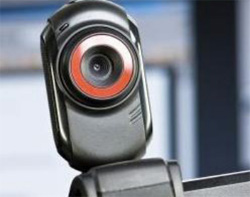Virtual House Calls
Using web-based video conferencing, an Internet-connected computer, and a webcam, University neurologists Kevin Biglan and Ray Dorsey have conducted groundbreaking studies that show it is possible to deliver effective specialized care to people with Parkinson’s disease, even if they are hundreds or even thousands of miles away--this is through the power of telemedicine.
 Biglan and Dorsey have evaluated an early stage smartphone application that measures a patient’s gait, posture, and voice and then sends the information back. Such Big Data could be used to determine whether a drug, device, or intervention is working or even (in the future) whether someone has Parkinson disease.
Biglan and Dorsey have evaluated an early stage smartphone application that measures a patient’s gait, posture, and voice and then sends the information back. Such Big Data could be used to determine whether a drug, device, or intervention is working or even (in the future) whether someone has Parkinson disease.
Their work helps prove that Parkinson’s and other movement disorders can be treated through telemedicine, which facilitates the exchange of medical information through electronic communications. For many of these disorders, diagnosis and treatment are based on observing a patient perform certain tasks. Today, of those affected with Parkinson’s in the United States, only 42 percent see a neurologist.
According to Dorsey, those who do not are 20 percent more likely to fracture their hips, enter a skilled nursing facility, or die of the disease. Telemedicine can improve those numbers and enable anyone anywhere to receive care.
